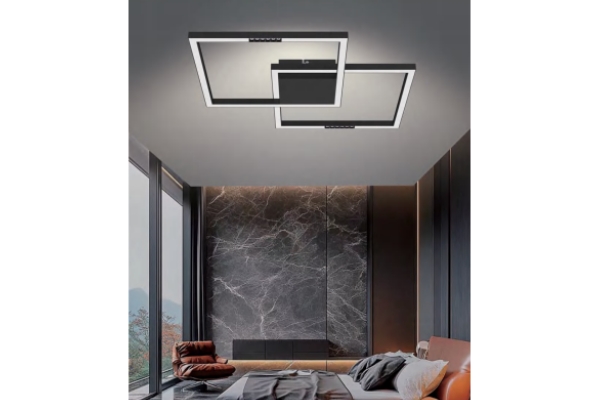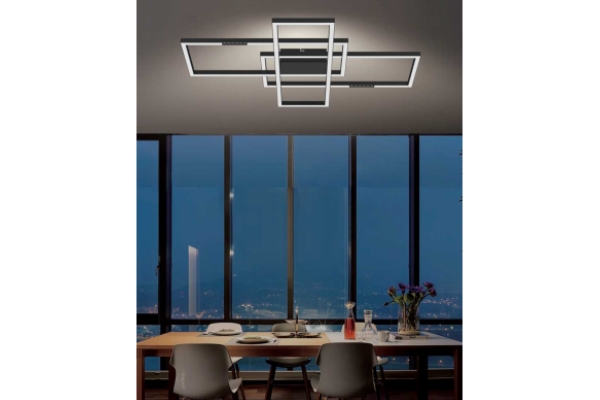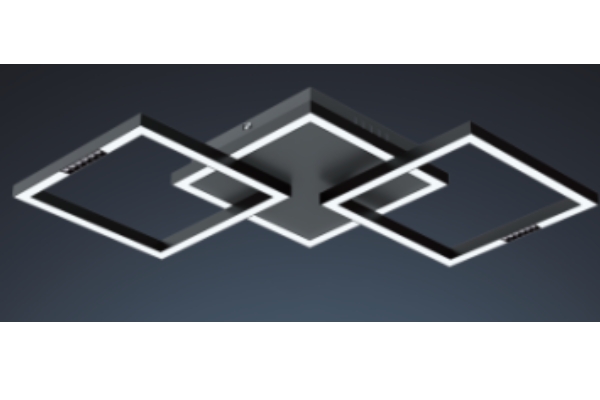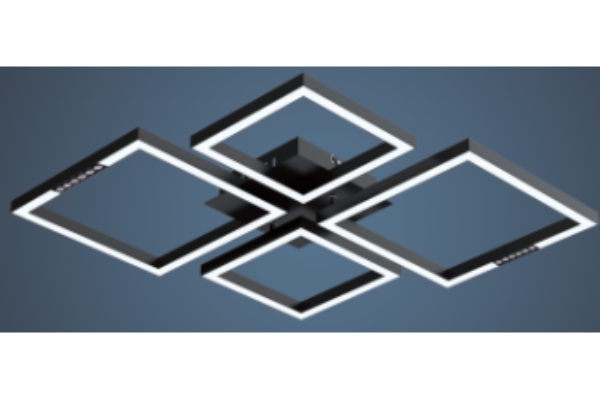How to solve the light decay problem of LED ceiling lamp during long-term use?
Release Time : 2025-04-16
LED ceiling lamps have light decay problems during long-term use, which will affect their lighting effects and service life.
LED chips are one of the key factors affecting light decay. High-quality LED chips have higher luminous efficiency and better stability. When choosing LED chips, you should pay attention to their brand, manufacturing process and related performance parameters. For example, chips from well-known brands usually have advantages in material purity and crystal structure, which can effectively reduce internal defects and reduce the probability of non-radiative recombination, thereby improving luminous efficiency and delaying light decay. At the same time, it is necessary to choose chips with appropriate current density. Too high current density will cause serious heating of the chip and accelerate light decay, while the appropriate current density can make the chip emit light in a stable working state and extend its service life.
LED ceiling lamps will generate heat during operation. If the heat dissipation is not smooth, the chip temperature will rise, which will in turn aggravate the light decay. Therefore, it is very important to optimize the heat dissipation design. First of all, heat dissipation materials with good thermal conductivity, such as aluminum alloy, should be selected as heat dissipation components of lamps. These materials can quickly conduct the heat generated by the chip and reduce the junction temperature of the chip. Secondly, it is also very critical to design the heat dissipation structure reasonably. For example, the use of fin-type heat dissipation structure can increase the heat dissipation area and improve the heat dissipation efficiency; or a heat dissipation channel can be set inside the lamp to dissipate heat using the principle of air convection. In addition, you can also consider using high thermal conductivity silicone grease or thermal conductive glue between the chip and the heat dissipation component to enhance the heat conduction effect and reduce thermal resistance.
A stable driving power supply is an important factor in ensuring the normal operation of the LED ceiling lamp and reducing light decay. LED is a current-type device, and its luminous intensity is closely related to the current passing through it. If the current output by the driving power supply is unstable, it will cause the working current of the LED chip to fluctuate, thereby causing light decay. Therefore, a constant current driving power supply should be used to ensure that the output current remains stable within the specified range. At the same time, the quality of the driving power supply also directly affects the performance and life of the lamp. Selecting a driving power supply with good electromagnetic compatibility, high efficiency and low ripple coefficient can provide a stable and pure current for the LED and reduce the light decay caused by power supply problems.
The working environment temperature of the LED ceiling lamp has a significant impact on light decay. Generally speaking, for every 10°C increase in ambient temperature, the light decay rate of the LED will accelerate by about 20% - 30%. Therefore, try to control the working environment temperature of the lamp. When installing LED ceiling lamps, you should choose a well-ventilated location and avoid installing them in a closed, high-temperature space. For some places that need to work in a high-temperature environment, such as kitchens and bathrooms, you can consider using lamps with good heat dissipation and high-temperature resistance, and take appropriate insulation measures to reduce the impact of ambient temperature on the lamps.
Reasonable optical design can not only improve the light efficiency of lamps, but also reduce light decay to a certain extent. For example, by optimizing the design of optical components such as reflective cups and lenses, light can be transmitted and distributed more effectively, reducing the reflection and scattering of light inside the lamp, thereby reducing the light decay caused by optical loss. At the same time, it is also important to choose suitable optical materials. Some optical materials with high transmittance and low absorption can better transmit light and keep the luminous performance of lamps stable. In addition, anti-ultraviolet and anti-aging optical coatings can also be used to protect optical components from external environmental factors and extend their service life.
Regular maintenance and inspection are effective measures to promptly discover and solve the light decay problem of LED ceiling lamps. Regularly check the appearance of the lamp to see if there is dust, stains, etc. covering the lampshade or optical components. If necessary, clean it in time to ensure the normal propagation of light. At the same time, use professional testing equipment, such as spectrum analyzers, illuminance meters, etc., to regularly test the performance indicators of the lamp, such as the luminous flux and color rendering index, to understand the light decay of the lamp. Once the light decay is found to be beyond the normal range, analyze the cause in time and take corresponding measures, such as replacing aging parts and adjusting the drive power parameters.
When using LED ceiling lamps, users should follow the correct usage method to extend the service life of the lamps. Avoid frequent switching of lamps, because each switch will generate a large current shock, which is easy to damage the LED chip and accelerate the light decay. At the same time, do not cover the lamp with objects to avoid affecting heat dissipation. In addition, according to different usage scenarios and needs, reasonably set the brightness and use time of the lamp, and avoid using it at high brightness for a long time to reduce the aging speed of the LED chip.
Solving the light decay problem of LED ceiling lamps during long-term use requires multiple aspects, including comprehensive consideration of chip selection, heat dissipation design, driver power supply, working environment, optical design, maintenance and testing, and usage methods, in order to effectively improve the performance and service life of the lamps and provide users with stable and efficient lighting services.







